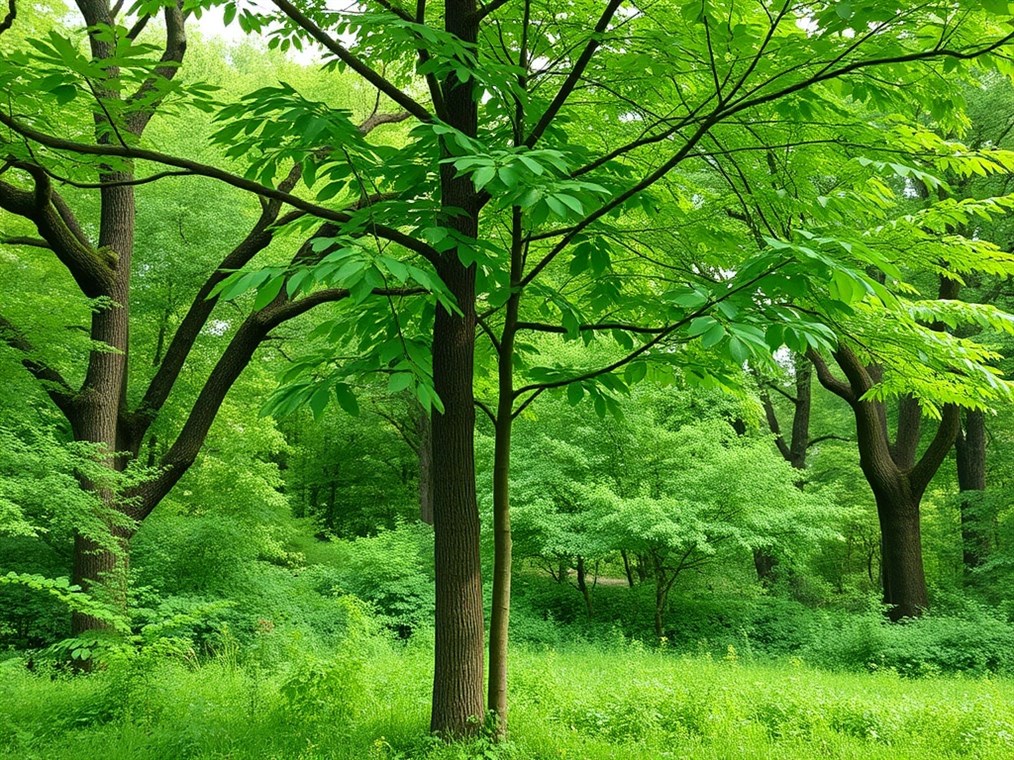Cracking the Code: How to Spot a Pignut Hickory
Ever walked through the woods and wondered, “What kind of tree is that?” If you’re in the eastern U.S. or Canada, chances are you’ve stumbled upon a Pignut Hickory (Carya glabra). These trees are all over the place, especially in those classic oak-hickory forests. But how do you tell a pignut from its leafy neighbors? Don’t worry, it’s not as tough as cracking one of their nuts!
First off, a little background. The pignut hickory goes by a bunch of nicknames – sweet pignut, coast pignut hickory, smoothbark hickory, swamp hickory, even broom hickory. Whatever you call it, it’s a pretty standard-sized tree, usually hitting 50 to 80 feet tall. Every now and then, though, you’ll see a real giant pushing 100 feet. They tend to have a fairly trim figure, crown-wise. Now, about that name… Apparently, early settlers weren’t too keen on the nuts themselves, but their pigs sure were!
Let’s get down to the nitty-gritty: the leaves. These are compound leaves, meaning each “leaf” is actually a bunch of smaller leaflets all working together. Expect to see them in the 8-12 inch range. Most of the time, you’ll find five leaflets on each leaf, but sometimes you might get lucky and find seven. Think of them as pointy little canoes with teeth – lance-shaped with finely toothed edges and a sharp tip. The top side is usually a smooth, yellow-green, while the bottom is a bit paler. Fun fact: Carya glabra basically means “smooth hickory,” so you’ll often find these leaves and twigs are pretty slick. And in the fall? Get ready for a golden show!
Now, take a look at the bark. This is where things get interesting. Young pignuts have smooth, gray skin, like they’re fresh out of tree-school. But as they age, the bark develops this cool pattern of tight ridges and shallow valleys. It’s generally gray and doesn’t peel off in big, dramatic flakes like a Shagbark Hickory. That said, older pignuts can get a little shaggy, so don’t let that throw you completely.
What about the twigs and buds? Pignut twigs are on the slender side, reddish-brown, and, you guessed it, smooth. The buds at the end of the twigs are small – about a quarter of an inch – and shaped like tiny ice cream cones covered in light tan or brown scales. If you slice open a twig, you’ll see the pith (that’s the stuff in the middle) is solid, tan, and has five sides.
Okay, nut time! Pignut hickory nuts are pear-shaped and usually ripe around September or October. The husk (that’s the outer shell) is thin, light brown, and only splits partway down from the top. The nut inside is smooth and roundish. Now, here’s the thing: those nuts can be a bit of a gamble. Sometimes they’re sweet, sometimes they’re kinda bitter, and they’re always a pain to get out of the shell. The squirrels and other critters don’t seem to mind, though!
Where do you find these guys? Pignut hickories are often hanging out in dry, upland woods, especially where the soil is acidic (think sandstone or granite). They also like sandy or gravelly spots on dry ridges. Once they get their roots down, they’re pretty tough and drought-resistant, but they don’t like having wet feet.
Now, here’s where it gets a little tricky. There are a few other hickories out there that can look pretty similar.
- Red Hickory (Carya ovalis): This one’s the pignut’s closest cousin. The big difference? Red hickories usually have seven leaflets per leaf (though sometimes five), while pignuts usually stick to five. Also, the husk on a red hickory nut splits all the way to the base.
- Shagbark Hickory (Carya ovata): As I mentioned before, shagbarks are the ones with the crazy, peeling bark. Easy to spot!
- Bitternut Hickory (Carya cordiformis): Bitternuts also have husks that don’t split all the way, but their buds are bright yellow and skinny, and the nut inside is seriously bitter. You won’t mistake it.
- Mockernut Hickory (Carya tomentosa): Mockernuts have thicker twigs, bigger leaves with hairy undersides, and a thicker husk on the nut.
One last thing: pignut hickories have both male and female flowers on the same tree. The male flowers look like droopy little worms (catkins), while the female flowers are tiny spikes. And the wood? It’s super strong and shock-resistant, which is why it’s used for things like tool handles and baseball bats.
So, there you have it! Identifying a pignut hickory is all about putting together the clues: leaves, bark, twigs, nuts, and where it’s growing. Once you get the hang of it, you’ll be spotting these trees left and right. Happy tree-spotting!

